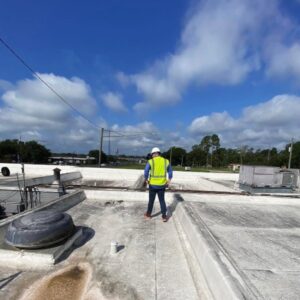
Commercial roof inspections are an essential aspect of building maintenance that should not be overlooked or taken lightly. By thoroughly examining and evaluating the condition of your commercial roof, you can identify potential issues early on, prevent costly damages, and prolong the lifespan of your roof. In this article, we will explore the importance of roof inspections in commercial buildings, the key benefits they offer, the process of conducting these inspections, common issues that can be uncovered, the post-inspection procedures, and tips for maintaining your commercial roof.
Understanding the Importance of Roof Inspections
Commercial buildings are often subjected to various weather conditions, including heavy rain, high winds, and extreme temperatures. Over time, these factors can take a toll on the structural integrity of the roof, leading to leaks, water damage, and other issues. Regular roof inspections serve as a proactive measure to detect and address potential problems before they escalate into more significant and costly repairs.
Moreover, roof inspections are not only crucial for maintaining the structural integrity of the building but also for ensuring the safety and well-being of the occupants. A well-maintained roof can prevent water leaks, mold growth, and other hazards that could jeopardize the health of those inside the commercial property. By investing in regular roof inspections, building owners demonstrate their commitment to creating a safe and secure environment for everyone within the premises.
The Role of Roof Inspections in Commercial Buildings
Roof inspections play a vital role in maintaining the overall integrity of commercial buildings. They help to identify signs of wear and tear, damage, or any potential weaknesses that could compromise the safety and functionality of the roof. By identifying these issues early on, building owners can take prompt action to rectify the problems and prevent further damage.
In addition to structural concerns, roof inspections also contribute to the energy efficiency of commercial buildings. A well-maintained roof with proper insulation and sealing can help regulate indoor temperatures, reducing the reliance on heating and cooling systems. This not only leads to cost savings for the building owner but also contributes to environmental sustainability by lowering energy consumption.
Key Benefits of Regular Roof Inspections
Regular roof inspections provide several key benefits for commercial building owners. Firstly, they can prevent small issues from turning into major problems that require extensive repairs or even roof replacement. Secondly, by identifying and addressing issues promptly, the overall lifespan of the roof can be significantly extended. Additionally, routine inspections and maintenance can help to maintain the structural integrity of the roof and ensure the safety of the occupants within the building.
Furthermore, regular roof inspections can also have a positive impact on the insurance premiums for commercial properties. Insurance companies often offer discounts to building owners who demonstrate proactive maintenance practices, such as regular roof inspections. By investing in these inspections, property owners not only protect their investment but also potentially reduce their long-term insurance costs.
The Process of Commercial Roof Inspections
The process of commercial roof inspections typically involves two main stages – the initial assessment and planning, followed by the detailed inspection and reporting.
Initial Assessment and Planning
Before conducting a thorough inspection, it is important to have a clear understanding of the building’s roof and its specific requirements. This includes reviewing the construction plans, obtaining any relevant historical data, and consulting with the building owner or property manager to gather insights about any previous issues or concerns. Additionally, it is crucial to plan the inspection according to the roof type, size, and accessibility, ensuring that the necessary tools and equipment are readily available.
Detailed Inspection and Reporting
During the inspection, a trained professional will systematically examine various components of the roof, including the surface material, flashings, gutters, drains, vents, and any other elements that may be present. They will look for signs of damage, deterioration, or potential weaknesses, such as cracks, leaks, sagging areas, or loose connections. Any identified issues will be documented in a comprehensive report, which will outline the findings and recommendations for repairs or further action.
Common Issues Uncovered in Roof Inspections
Roof inspections often uncover a range of issues that require attention and prompt resolution. Two notable areas of concern are structural problems and weather-related damages.
Structural Problems and Their Implications
Structural problems, such as sagging areas or compromised support systems, can significantly impact the overall stability and strength of the roof. These issues may arise due to poor construction practices, inadequate maintenance, or the effects of time and environmental factors. Timely identification of such problems during a roof inspection allows for intervention before more severe damage occurs.
Weather-Related Damages and Their Impact
Commercial roofs are constantly exposed to the elements, making them susceptible to weather-related damages. Strong winds, heavy rain, hailstorms, or extreme temperatures can cause shingle damage, cracks, leaks, or even blow-offs. By conducting regular inspections, these weather-related damages can be detected early, allowing for prompt repairs and mitigating the potential for more extensive water damage or other structural issues.
Post-Inspection Procedures
Once the inspection report is received, it is crucial to thoroughly analyze the findings and recommendations to determine the necessary course of action.
Analyzing the Inspection Report
Carefully reviewing the inspection report will allow you to fully understand the extent of the identified issues, their potential impact on the roof’s performance, and the recommended steps for resolving them. This information will help you prioritize the repairs or maintenance tasks needed to ensure the roof’s longevity and functionality.
Planning for Necessary Repairs or Replacement
Based on the findings of the inspection report, it is essential to develop a comprehensive plan for addressing the identified issues. This plan should include a timeline for completing the necessary repairs or replacements, as well as a budget to ensure that the required resources are allocated accordingly.
Maintaining Your Commercial Roof Post-Inspection
While inspections are an important part of maintaining a commercial roof, ongoing maintenance is equally essential to maximize its lifespan and performance.
Regular Maintenance Tips
Regularly inspecting the roof for signs of damage or deterioration, clearing debris and obstructions from drains and gutters, and promptly addressing any repairs are crucial maintenance tasks. Routine maintenance should also include periodic cleaning, particularly in areas prone to moss or algae growth, and ensuring that all roof access points are securely sealed.
When to Schedule Your Next Inspection
Following the completion of a roof inspection and necessary repairs, it is important to establish a schedule for future inspections. The frequency of these inspections will depend on several factors, such as the age and condition of the roof, the geographic location, and any specific requirements outlined by manufacturers or building codes. Typically, commercial roofs should be inspected at least once a year, but more frequent inspections may be necessary in areas prone to severe weather or other factors that could accelerate roof deterioration.
In conclusion, commercial roof inspections are a critical component of building maintenance. By understanding their importance, following a thorough process, and taking prompt action based on the findings, commercial building owners can protect their investment and avoid potential costly damage. Regular inspections, coupled with ongoing maintenance, will not only extend the lifespan of the roof, but also enhance its performance, ensuring the safety and comfort of tenants and occupants within the building.
Don’t wait for minor roofing issues to become major headaches. Trust Commercial Roofing Rana to provide the top-tier commercial roofing services your Mid-South property deserves. With our expertise in servicing industrial buildings, commercial stores, municipal buildings, and more, we ensure your commercial building is safeguarded against the elements. Our precision-engineered Duro-Last roofing systems offer superior protection, tailored to fit your roof perfectly. Serving Memphis, TN, and the surrounding areas since 1983, our licensed professionals are dedicated to delivering quality and reliability. Whether you manage a healthcare center, church, government building, or shopping center, we have the experience to handle your roofing needs. Protect your investment and ensure your property is ready for the next rainstorm. Schedule Now! and let Commercial Roofing Rana fortify your first line of defense against water damage.
